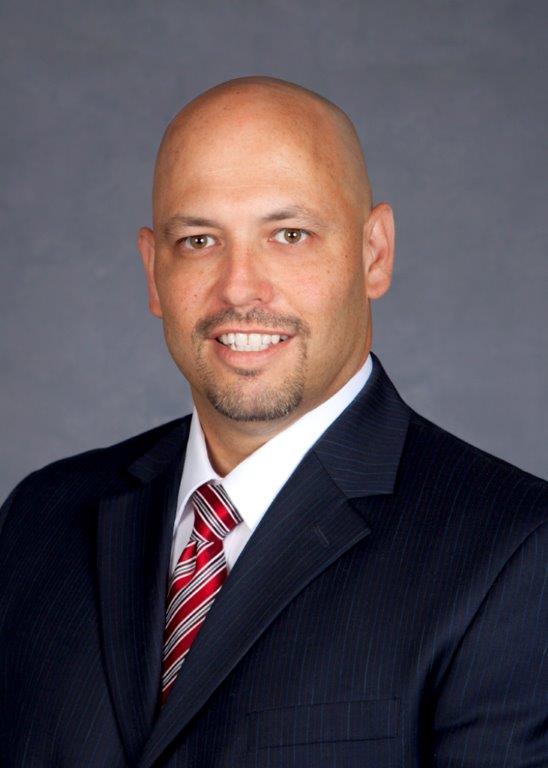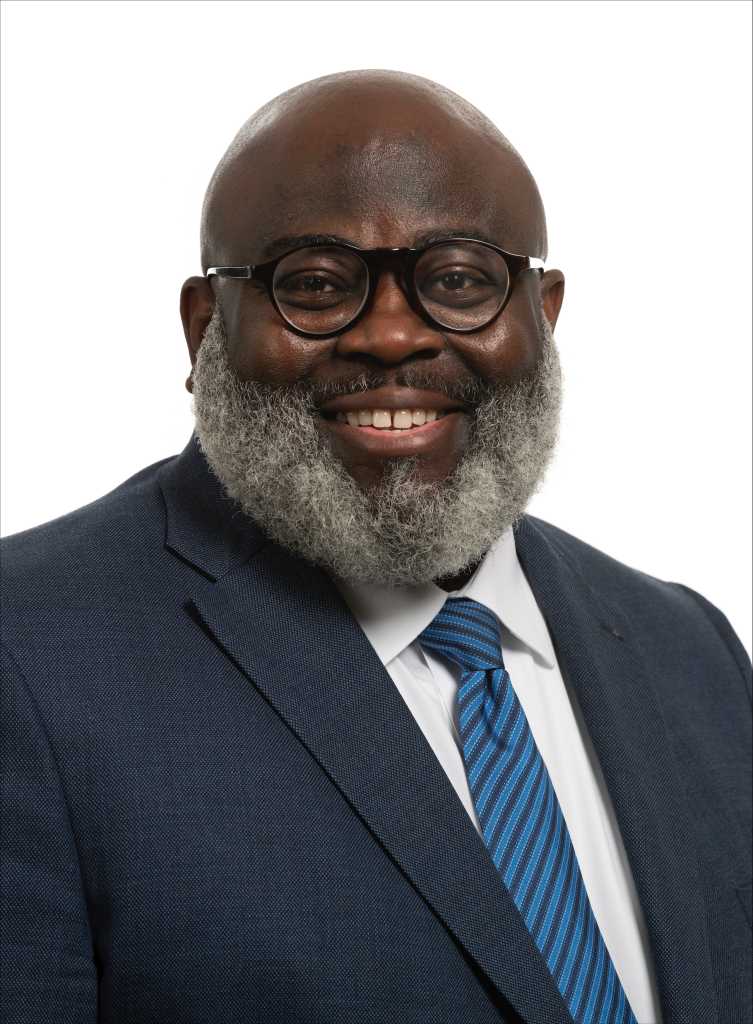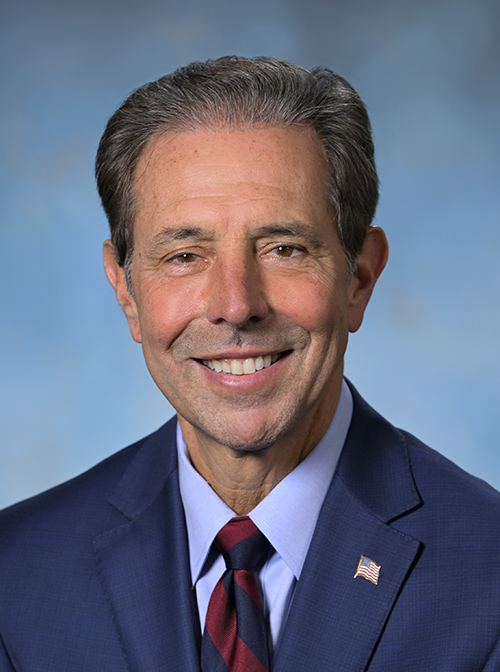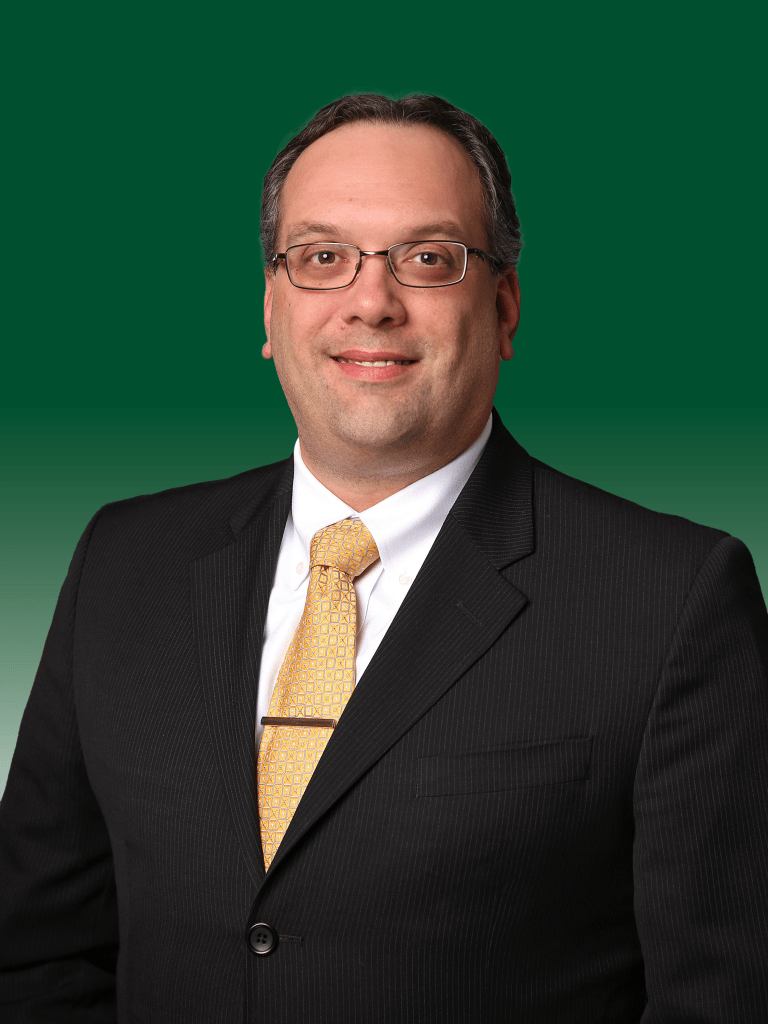📚 CIO 100 US: 8 award-winning healthcare IT projects
💡 Newskategorie: IT Security Nachrichten
🔗 Quelle: cio.com
Once a laggard in IT adoption, the healthcare industry now universally embraces digital transformation.
Consider the figures: According to a 2022 survey from healthcare consultancy The Chartis Group, 99% of the 143 US health system executives it polled agreed on the importance of investing in digital initiatives.
Research points to several drivers that are pushing healthcare entities forward on their digital journeys, with the need to improve patient outcomes and reduce the costs of care topping the list. Other motivations include the desire to provide better patient experiences, to better aid clinicians and support staff in their jobs, and to compete with digital natives that are entering the healthcare market.
The pandemic accelerated the healthcare sector’s digital journey, forcing institutions to work remotely where possible and to find ways to keep up with the high demand for care brought on by COVID, notes Abhishek Singh, a partner at Everest Group and leader of the research firm’s cloud and legacy transformation practice.
Singh says healthcare is seeking transformation throughout its operations — from back-office processes through mid-office functions to front door–type engagements with patients, with digitalization initiatives in the first two areas supporting the last.
“Organizations are more willing and able to spend, as they’re seeing the benefits of their [digital initiatives],” he adds.
Like other sectors, the healthcare industry faces challenges such as financial and resource constraints as they move forward with tech projects, industry experts say. Healthcare also must contend with industry-specific challenges that can slow DX, says Taylor Davis, president of KLAS Research.
“It’s the most complex service industry the world has ever seen,” Davis says. The sector rests on an extensive, complex body of knowledge that’s rapidly increasing. Its core systems hold hundreds of thousands of data fields per individual — significantly more than the per-person count held by core systems in other industries. It’s governed by complicated regulations. It has complicated funding and payment systems. And it’s a high-risk environment, where the consequences of being wrong can be catastrophic or even fatal.
Yet, despite that staggering complexity, experts are seeing leaps in digitalization and transformation to deliver better experiences, more efficient services, and improved care outcomes.
The following eight winners of CIO 100 Awards for IT Innovation and Leadership highlight the digital successes that the healthcare industry has delivered.
Atlantic Health taps AI to expedite critical radiology reviews

Sunil Dadlani, SVP and CIO, Atlantic Health System
Atlantic Health System
Organization: Atlantic Health System
Project: Radiology Imaging AI Analysis Project
IT Leader: Sunil Dadlani, SVP and CIO
For radiologists at Morristown, N.J.-based Atlantic Health System, speed is critical when reviewing patients’ imaging studies.
But the radiologists saw that the work was taking longer than they wanted, particularly for highly advanced studies or studies from patients with previous imaging that also required reviews.
Moreover, while the images could reveal patients in need of immediate additional care — care that was being delayed by the time it took to interpret the images — radiologists didn’t know which patients needed expedited treatment until they had reviewed their images.
Atlantic Health System turned to artificial intelligence to solve for that conundrum, teaming up IT with the radiology department to select software that uses AI to analyze images, with Food and Drug Administration–approved algorithms trained to spot and flag acute abnormalities.
More specifically, the AI analyzes images in queue for review, looking for and identifying clinical abnormalities in those images and then flagging those images for priority review by the radiologists. The technology ensures that images that could indicate the need for time-sensitive treatment are seen first, enabling patients to get the care they need as quickly as possible.
The technology, now fully deployed, is delivering results: By November 2021, the AI prioritized 469 images out of the 8,479 scans it analyzed.
“As with all technological innovations throughout our organization, the patient is always first and foremost at the center of anything we do. This program embodies that approach in a unique way — it is both virtually a clinical assistant to our radiologists, and at the same time an advocate for our patients with the most urgent needs,” says Senior Vice President and CIO Sunil Dadlani.
CommonSpirit Health goes digital to enhance patient experience
Organization: CommonSpirit Health
Project: Connected Patient Journeys and Experiences
IT Leader: Suja Chandrasekaran, system SEVP and chief information and digital officer (Chandrasekaran has since left the company)
CommonSpirit Health has more than 1,000 care sites and 141 hospitals in 21 states. That made the creation and delivery of integrated, standardized, and connected patient experiences across a continuum of provided care essential.
With that in mind, its IT and digital teams in July 2020 embarked on a project to create connected, personalized patient journeys and experiences, with a goal to deliver better, more holistic healthcare for patients and to develop better operating models for providers.
Engaging all key stakeholders, processes, and systems, the teams created governance structures, working groups, cross-platform application architectures, common goals, and key performance indicators to ensure the project successfully progressed.
They then charted key patient journeys, infusing digital and human experiences in each journey to promote patient engagement and deliver a better care experience. The teams then identified, evaluated, and prioritized those experiences, working with operational and clinical teams to build new products and processes to further support them.
CommonSpirit Health has enjoyed positive returns on its investments. For example, in fiscal 2021 its Unified Web Experience served more than 6.5 million page views in two of its transitioned markets. And its Search and Schedule Experience served more than 2.6 million clinician profile views to patients, some 94,000 online appointment bookings and more than 720,000 click-to-call connections to care providers.
ChedMed IntuneHealth offers VIP care to senior patients, wherever they need it

Hernando Celada, chief innovation and strategic initiatives officer, ChenMed
ChenMed
Organization: IntuneHealth – A ChenMed Company
Project: IntuneHealth
IT Leader: Hernando Celada, CIO
Miami-based ChenMed has created a new entity, IntuneHealth, that uses technology to deliver concierge, VIP care when and where its senior patients need it.
IntuneHealth is a fully-integrated system of care featuring a patient-facing app through which patients can access care at any time, including virtual visits with the touch of a button.
Patients can use the app to order medicines, schedule appointments, get lab results and their medical history. They can use the app to access concierge and support team members around the clock year-round.
Moreover, they can use the app to manage their care whether that care is delivered virtually, in office, or at their own homes, as well as whether the care is provided by their own primary care physicians (PCPs) or specialists.
IntuneHealth also uses technology to enable doctor-to-doctor coordination of care, so PCPs can guide their patients through specialty care and visits.
Other features include an easy-to-use interface with data-driven personalization; a patient portal featuring appointment scheduling and reminders; medication refill requests and reminders; referral management; and the capability to link with monitoring devices, wearables, and other such tools.
Patients can use the app to connect to their caregivers via video, phone, or in-app chat. Additionally, they can use it to access virtual events and social activities, such as cooking classes, fitness competitions, and games.
“IntuneHealth is taking the hassle out of healthcare and delivering high-quality, convenient care to our members, whether that’s in one of our centers, virtually through our app, or in the comfort of their own home,” says CIO Hernando Celada. “We believe healthcare should be accessible, simple, and coordinated to deliver the best experience and outcomes for our patients — and we look forward to providing that at IntuneHealth.”
Jackson Healthcare automates patient record-sharing

Michael Garcia, SVP and CIO, Jackson Healthcare System
Jackson Healthcare System
Organization: Jackson Healthcare System
Project: Medical Record Surveillance and Record Sharing
IT Leader: Michael Garcia, SVP and CIO
Miami-based Jackson Healthcare System faced challenges around efficiently sharing patient records with other entities. This was a particular problem when working with smaller medical organizations, such as private practices and nursing facilities, that referred their own patients to the larger Jackson Healthcare System for medical services.
More specifically, many of those smaller entities rely on manual processes to retrieve patient records from Jackson. That created additional work for Jackson Healthcare workers and those at referring organizations, which often had to manually match retrieved records with their own patient files. This manual work meant records requests could take weeks to complete.
To address those issues, cross-disciplinary teams turned to process automation, data manipulation, an integration engine, and other technologies for its Medical Record Surveillance and Record Sharing project. The in-house solution uses data surveillance to scan medical records in real-time, match them to the partner organizations, and then automate the medical record transfers.
This solution also sends medical records to the referral organization via the method of their choice, as files, direct messages, electronic fax, or even physical fax. Moreover, the technology can scale, thereby helping Jackson efficiently handle an increasing number of referrals.
“For too long, healthcare has faced the hurdle of a challenging technological landscape and limited options to share patient records easily. The automation of medical record-sharing overcame this big hurdle for referring organizations and enabled Jackson to grow partnerships while simultaneously benefiting our patients and community,” says Senior Vice President and CIO Michael Garcia.
He adds: “This technology has become a strategic differentiator to keep Jackson as a community leader and a place for everyone to receive the highest-level care.”
Marshfield Clinic turns to telehealth to overcome staffing shortages
Organization: Marshfield Clinic Health System
Project: Telehealth Solutions in Critical Access Hospitals
IT Leader: Jeri Koester, CIO
Marshfield Clinic Health System was facing a staffing challenge at its Neillsville, Wisc., facility. The healthcare organization had a shortage of physicians, mostly primary care providers and emergency department clinicians who supervised its nurse practitioner (NP) hospitalists and provided direct patient care.
MCHS saw telehealth as a solution to that problematic scenario. It deployed a TeleDoc Health RP-Vita Robot, which enabled MD hospitalists to conduct virtual visits with patients and virtually supervise and consult with NP hospitalists at the Neillsville facility.
Remote providers can move the self-driving robotic cart themselves by simply clicking a link to direct it to its destination, with onboard sonar keeping the cart from colliding with people or objects in its path.
Buoyed by the success of that program, MCHS expanded the use of telehealth in its facilities to enable remote specialty consults for patients. For example, the organization deployed InTouch TV pro devices to each patient room, first at MMC-Neillsville and later at its Ladysmith, Wisc., hospital. The technology converts every in-room television to a telehealth endpoint capable of offering video and audio visits with healthcare providers across a range of care — from medical specialties to nutrition needs to spiritual services. The InTouch TV Pro also enables patients to facilitate their own video visits with friends and family when in-person visitations aren’t possible.
According to MCHS, these telehealth solutions have helped increase healthcare access and quality while decreasing costs and provider dissatisfaction.
“Part of our mission at Marshfield Clinic Health System is to bring affordable healthcare to our communities. We need to use innovation to meet the needs of such a rural healthcare population,” says CIO Jeri Koester. “In some of our communities, if we weren’t present, patients would drive hours for access care. By maximizing our capabilities with a telehealth solution, we are able to bring expert-level physician care to wherever our patients are.”
Novant Health tele-ICU improves patient care virtually

Onyeka Nchege, SVP and CIO, Novant Health
Novant Health
Organization: Novant Health
Project: Digital Enhancement and Virtualization of Traditional Care Channels and Processes
IT Leader: Onyeka Nchege, SVP and CIO
Novant Health, based in Winston-Salem, N.C., has focused on deploying technology to create virtually enhanced care in its own facilities, in its patients’ homes, and even in community locations.
Novant Health’s tele-ICU program demonstrates this vision, enabling critical care physicians (called intensivists) and experienced critical care nurses to remotely monitor patients who are being seen onsite in community care facilities. These intensivists and nurses can work from Novant Health’s two command centers, other care sites, or even their own homes.
Novant Health built this tele-ICU program on various technologies, including mobile advanced sensor capabilities that can be moved into standard hospital rooms to provide an intensive-care degree of monitoring for the patient; tele-ICU workstations in the command centers with multiple monitors, headsets, and webcams for intensivists; and an electronic medical record (EMR) system with tools tailored to support digital tele-ICU workflows.
To ensure the tele-ICU program enabled a seamless patient care experience, Novant Health’s Digital Products and Services (DPS) team automated communication between care teams. The DPS team also worked with clinicians to develop and deploy algorithms to score medical and safety alerts based on patient acuity levels and then automated notifications.
“Our work developing our tele-ICU program has enhanced the patient experience and virtualized our traditional care channels to deliver business value, increase access to care, and improve the quality of that care,” says Senior Vice President and Chief Information Officer Onyeka Nchege. “This project was a transformative component of Novant Health’s path through the pandemic surge and laid the foundation for virtual extensions now woven throughout all previously existing physical locations.”
In addition to tele-ICU, Novant Health’s DPS team has delivered other advanced technologies (such as AI/machine learning, advanced sensors, autonomous drones, and robotics) to support next-level healthcare and provide the foundation for a highly-advanced, interwoven composite care delivery method.
Penn Medicine digitally transforms DNA sample collection

Michael Restuccia, SVP and CIO, Penn Medicine
Penn Medicine
Organization: Penn Medicine
Project: Accelerating Research by Integrating Clinical and Research IT Systems to Rapidly Expand Penn Medicine’s Biorepository
IT Leader: Michael Restuccia, SVP and CIO
As Penn Medicine anticipated a dramatic growth in patient DNA sample collections, officials concluded that the organization’s existing processes were too labor-intensive to enable that expected expansion.
So Penn Medicine set out to develop a technology-enabled process that could support collecting large numbers of specimens as well as obtaining and storing patient consent — all without driving up costs and increasing manual work.
To deliver on that objective, multiple teams collaborated to design and implement a new process for managing the physical samples and the data associated with them.
This multidisciplinary project built a process that leverages electronic medical record (EMR) system and its patient portal to obtain patient consent; uses the clinical lab system to barcode samples; uses the laboratory information management system (LIMS) to process samples; and works across those multiple systems to link research samples to clinical identifiers.
In another key innovation, the LIMS and data analytics teams set up an integration with the EMR and clinical lab IS systems to identify the patient’s electronic patient identifier from the collected sample’s clinical accession number, with linking occurring automatically each night. The new setup increases quality and speed by eliminating high-cost manual efforts and ensuring a higher degree of accuracy over the legacy manual approach.
Penn Medicine officials said the project is now successfully supporting its expanding collection of biological samples. But they also noted that the collaborative effort to re-imagine a process leveraging established, centralized systems, staff, and processes was itself a key innovation.
“Over the past decade, we have invested significantly in foundational technologies to support our clinical and research operations. When our research community proposed a significant expansion of our central sample bio-repository, we seized upon the opportunity to modernize their patient consenting and sample collection processes,” says Michael Restuccia, Penn Medicine senior vice president and CIO.
University of Miami Health System enlists IoT to ensure COVID vigilance

David Reis, CIO, University of Miami Health System and Miller School of Medicine
University of Miami Health System and Miller School of Medicine
Organization: University of Miami Health System
Project: Enhancing Tele-Vigilance
IT Leader: Dr. David Reis, VP of IT and CIO
Seeking to minimize COVID-19 transmissions as cases surged in Florida, the University of Miami Health System IT department developed what it termed “tele-vigilance” using IoT-enabled remote monitoring capabilities.
The IT department partnered with the IoT company TytoCare and Epic Systems, maker of electronic medical records (EMR) systems, to invent an end-to-end solution.
TytoCare’s all-in-one modular physical IoT device remotely monitors vital signs and breath sounds. Users can also use the device to pick up images of the skin, ears, eyes, and throats and then upload all that information to their medical record.
Doctors could enroll patients in the tele-vigilance program by using the EMR to order the TytoCare IoT device and establish for each patient which vitals to monitor and for how long. Each order would route to the tele-vigilance group, which would assist each individual — whether a student, employee, or patient — with device setup.
The IT department developed a new capability within the EMR to link the IoT device with each patient’s medical record and to automatically pull in the patient’s vital signs from the device.
IT developed automated data integrity methods, so that a real-time notification would be sent to the tele-vigilance team to contact patients if there were linking issues.
Additionally, the IT team integrated the IoT device with the patient portal, so individuals could see the vital signs that were sent to the tele-vigilance doctor.
And the team created a real-time push notification capability, which would send alerts to the tele-vigilance provider’s smartphone if any patient’s vital signs were out of range.
The University of Miami Health System deployed thousands of devices to students, employees, and patients, allowing them to be closely monitored at home after a COVID-19 positive test, thereby reducing unnecessary hospitalizations and exposing others to the virus while ensuring escalation of care if needed.


 800+ IT
News
als RSS Feed abonnieren
800+ IT
News
als RSS Feed abonnieren